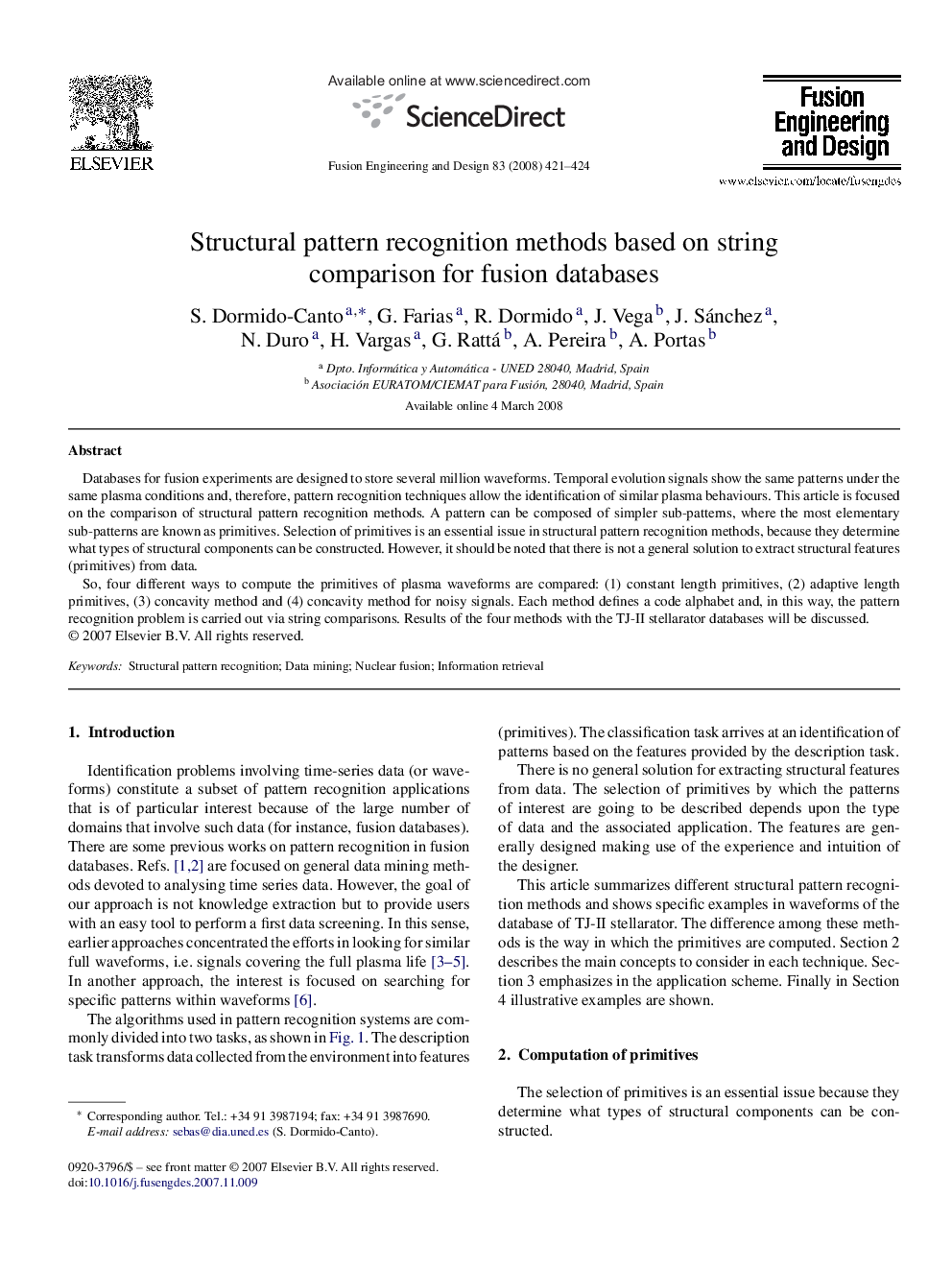| Article ID | Journal | Published Year | Pages | File Type |
|---|---|---|---|---|
| 272967 | Fusion Engineering and Design | 2008 | 4 Pages |
Databases for fusion experiments are designed to store several million waveforms. Temporal evolution signals show the same patterns under the same plasma conditions and, therefore, pattern recognition techniques allow the identification of similar plasma behaviours. This article is focused on the comparison of structural pattern recognition methods. A pattern can be composed of simpler sub-patterns, where the most elementary sub-patterns are known as primitives. Selection of primitives is an essential issue in structural pattern recognition methods, because they determine what types of structural components can be constructed. However, it should be noted that there is not a general solution to extract structural features (primitives) from data.So, four different ways to compute the primitives of plasma waveforms are compared: (1) constant length primitives, (2) adaptive length primitives, (3) concavity method and (4) concavity method for noisy signals. Each method defines a code alphabet and, in this way, the pattern recognition problem is carried out via string comparisons. Results of the four methods with the TJ-II stellarator databases will be discussed.
